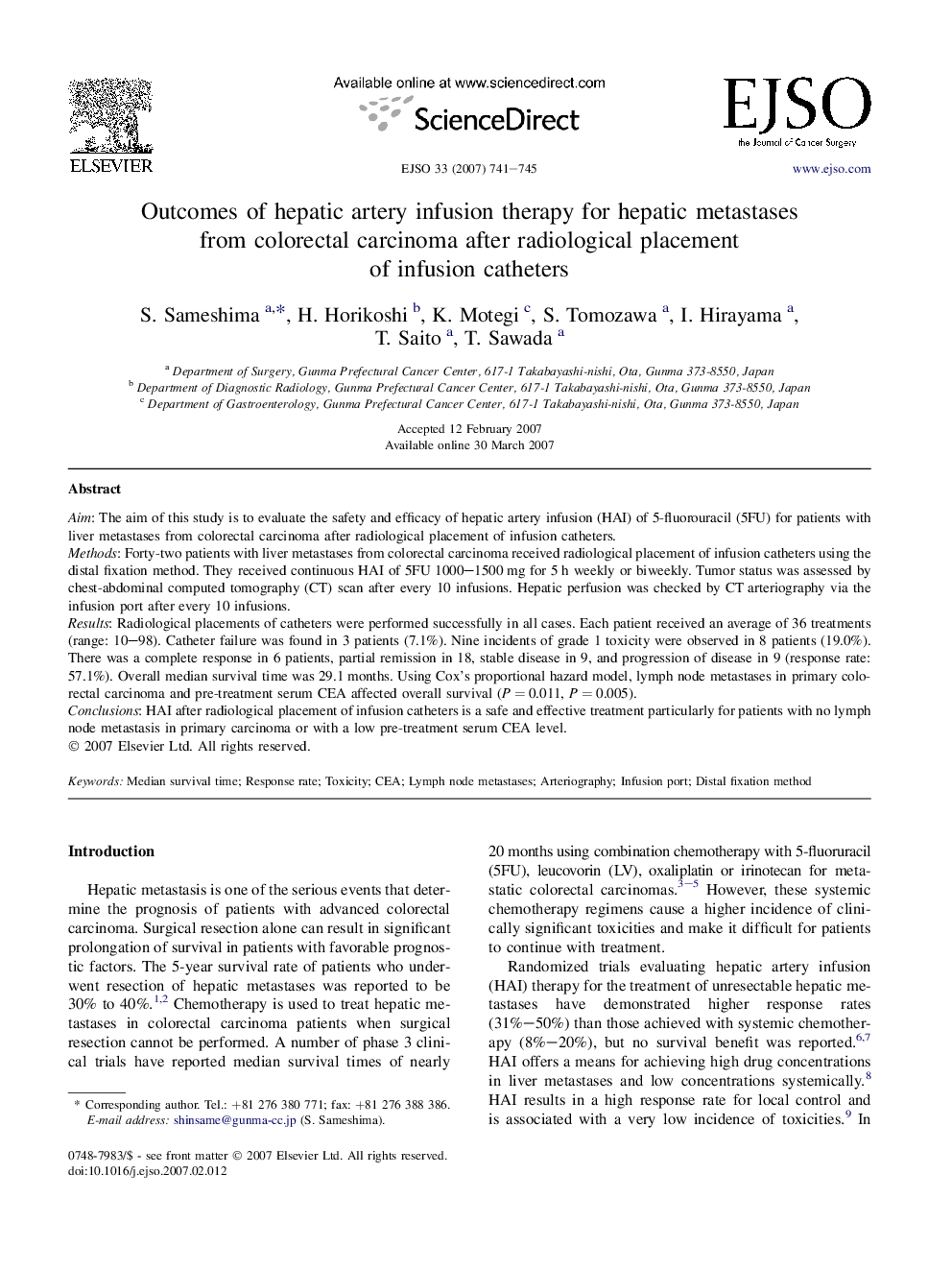| Article ID | Journal | Published Year | Pages | File Type |
|---|---|---|---|---|
| 3988111 | European Journal of Surgical Oncology (EJSO) | 2007 | 5 Pages |
AimThe aim of this study is to evaluate the safety and efficacy of hepatic artery infusion (HAI) of 5-fluorouracil (5FU) for patients with liver metastases from colorectal carcinoma after radiological placement of infusion catheters.MethodsForty-two patients with liver metastases from colorectal carcinoma received radiological placement of infusion catheters using the distal fixation method. They received continuous HAI of 5FU 1000–1500 mg for 5 h weekly or biweekly. Tumor status was assessed by chest-abdominal computed tomography (CT) scan after every 10 infusions. Hepatic perfusion was checked by CT arteriography via the infusion port after every 10 infusions.ResultsRadiological placements of catheters were performed successfully in all cases. Each patient received an average of 36 treatments (range: 10–98). Catheter failure was found in 3 patients (7.1%). Nine incidents of grade 1 toxicity were observed in 8 patients (19.0%). There was a complete response in 6 patients, partial remission in 18, stable disease in 9, and progression of disease in 9 (response rate: 57.1%). Overall median survival time was 29.1 months. Using Cox's proportional hazard model, lymph node metastases in primary colorectal carcinoma and pre-treatment serum CEA affected overall survival (P = 0.011, P = 0.005).ConclusionsHAI after radiological placement of infusion catheters is a safe and effective treatment particularly for patients with no lymph node metastasis in primary carcinoma or with a low pre-treatment serum CEA level.
